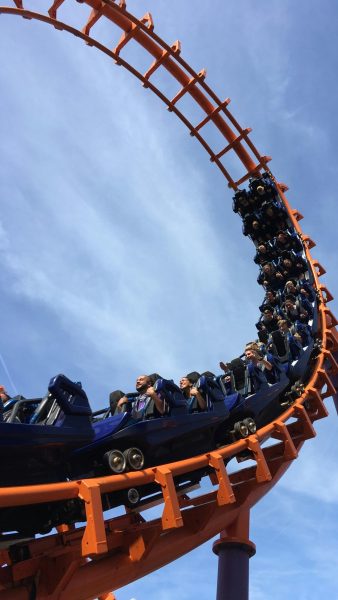What is the Saffir-Simpson Hurricane Wind Scale NOT telling you?
A hurricane is a monstrous storm commonly found in the tropical and subtropical parts of both the Northern and Southern hemispheres. They are characterized by having a center with no clouds called an eye, cold cloud tops, a defined center, and a couple other factors. They do come with a variety of names, like typhoons, cyclonic storms, and cyclones. However, these names are simply based on region and do not have any real differences. There is also the difference that storms in the Northern Hemisphere spin anti clockwise while those in the Southern Hemisphere spin clockwise, but this factor does not change much either.
What is the Saffir-Simpson Hurricane Wind Scale?
The Saffir-Simpson Hurricane Wind Scale (SSHWS) is the scale used to express the strength of a hurricane to the public. It is predominantly used by the National Hurricane Center (NHC), but is also used by a couple of other organizations. The scale is divided into 5 categories, with the whole scale solely based on sustained winds at the center, or eyewall, of the storm. Category 1 is the weakest at 74 mph or greater. Anything that is weaker than that is not classified as a hurricane, and is given the title of tropical storm if it is above 39 mph or tropical depression if it is under 39 mph. Category 2 is at 96 mph or greater. Category 3 is at 111 mph or greater, and any hurricane that reaches this intensity is giving the tidal “major hurricane”. These hurricanes are not to be seen lightly in any way. Categories 1 and 2 can be serious, but are nowhere near as dangerous. Category 4 is at 130 mph or greater. Category 5 is the final category at 157 mph or greater, and these hurricanes are rare and unbelievably dangerous. Some of the most damaging hurricanes of all time are in this category, including Katrina, Andrew, Ivan, Irma, Wilma, and Maria. The strongest hurricane of all time was Hurricane Patricia in 2015, with an astonishing wind speed of 215 mph. Any tropical low pressure system that reaches tropical storm status or greater is given a name, while tropical depressions are simply given the numbered tropical depression of that year.
Does the SSHWS tell us how dangerous a storm is?
The SSHWS only takes sustained winds into account. Despite the fact that hurricanes have many factors that attribute to their threat and behavior, the SSHWS, which is what is usually the first thing shown to the public, does not take anything else into account.
What other factors contribute to the structure and behavior of a hurricane?
There are far too many factors to talk about here but they all are important to showing just how dangerous a storm could potentially be. Some of these are incredibly important to know in order to completely understand the true threat of a hurricane.
Size is probably the easiest to understand. The size of a hurricane is just simply how far tropical storm force winds exceed from the center. Most hurricanes usually have tropical storm force winds tens or even a couple hundred miles from the center. Generally speaking, the larger a hurricane is, the more dangerous it is as the winds are more spread out, therefore affecting a larger area. Hurricane Sandy in 2012 is famous for being the largest hurricane in the Atlantic Ocean, and at the time, was the second costliest hurricane on record when it caused massive damage in the New York metropolitan area.
Forward movement speed is also pretty easy to understand. This is simply how fast a hurricane is moving. According to the NHC, the average hurricane generally moves at about 11 mph. However, hurricanes can move much slower or faster. Slower moving hurricanes are far more dangerous as the effects of a hurricane will last longer over land if it slows down or even stops moving. One hurricane well known for this is Hurricane Harvey in 2017. Harvey made landfall as a borderline category 4, still very strong to be fair, but it only stayed as a hurricane for less than a day over land. Yet, the storm stayed over the Houston metropolitan area for 4 days straight as it practically stopped moving. This resulted in trillions of gallons of rain being poured over the area, along with becoming the wettest hurricane in American history.
Air pressure is a bit more on the complicated side, but generally speaking, lower air pressure of a hurricane signifies a stronger storm. However, the relationship between wind speed and low pressure aren’t completely connected. For example, according to the NHC, Hurricanes Dorian and Wilma had the exact same wind speed at 185 mph. Dorian had an air pressure of 910 mbr, still pretty intense for a storm to be fair. However, Wilma had an air pressure of 882 mbr, making it more intense.
Storm surge is by far the most dangerous aspect of any hurricane. Storm surge is when the tides of the coast are elevated. Stronger, larger, slower, and more intense storms tend to lead to a higher storm surge. Storm surge that reaches even a few feet above sea level is enough to cause waters to go for miles off the coast, flooding anything in the way. Storm surge is especially dangerous in flat areas as the waters can go on for miles. However, the area most susceptible to storm surge is New Orleans, Louisiana, as significant parts of the area are located below sea level. This nightmare became real with Hurricane Katrina, as the levee system, the system that protects the area from being submerged, failed, causing massive flooding in the area. Hurricane Katrina is almost undoubtedly the most famous hurricane of all time because of this.
So What?
Despite all the factors having great importance, the SSHWS does not tell any information about any of these. So, the next time a hurricane comes, make sure to figure out as much of the information above as possible in order to make the judgement of whether or not it is worth evacuating.











